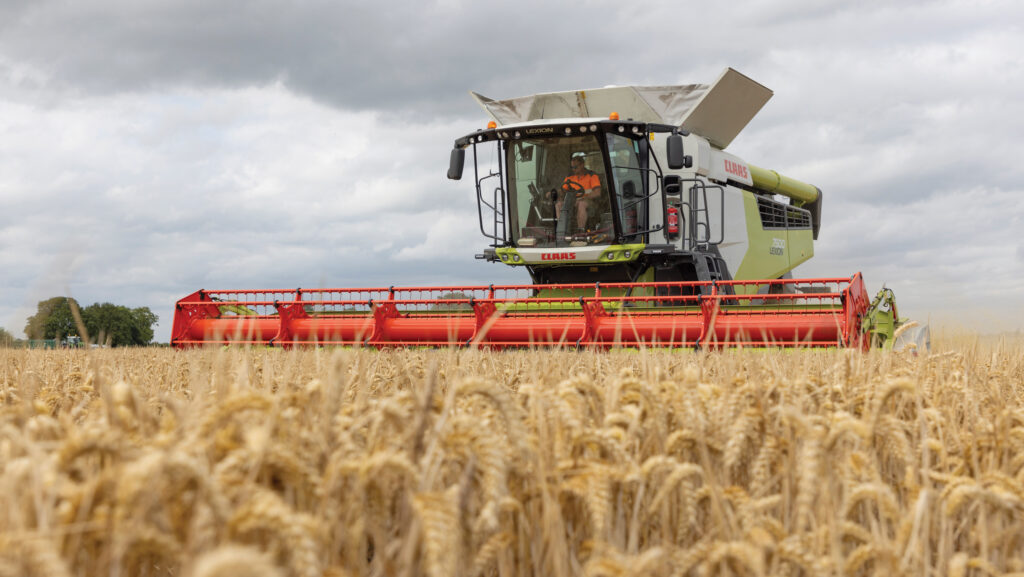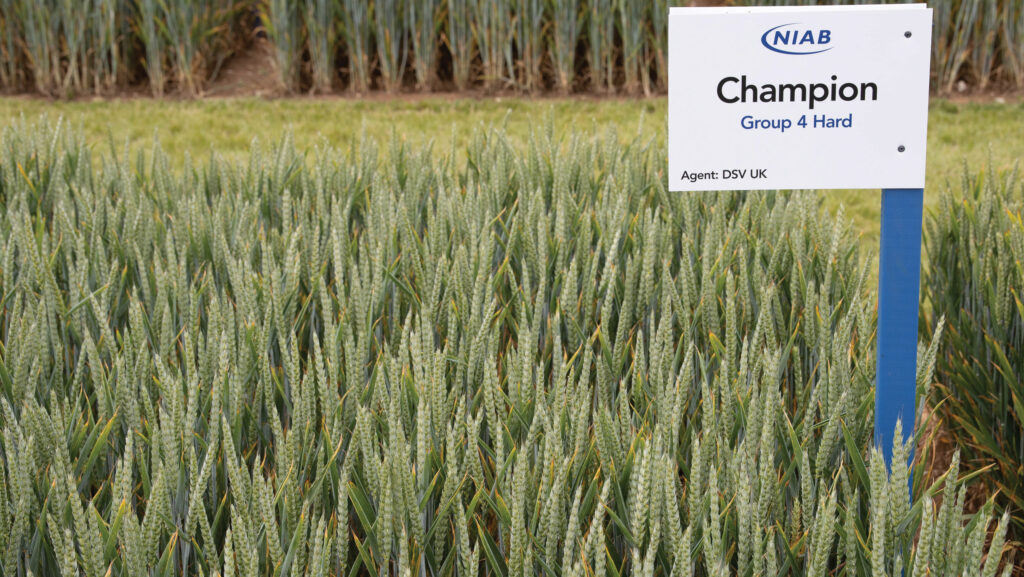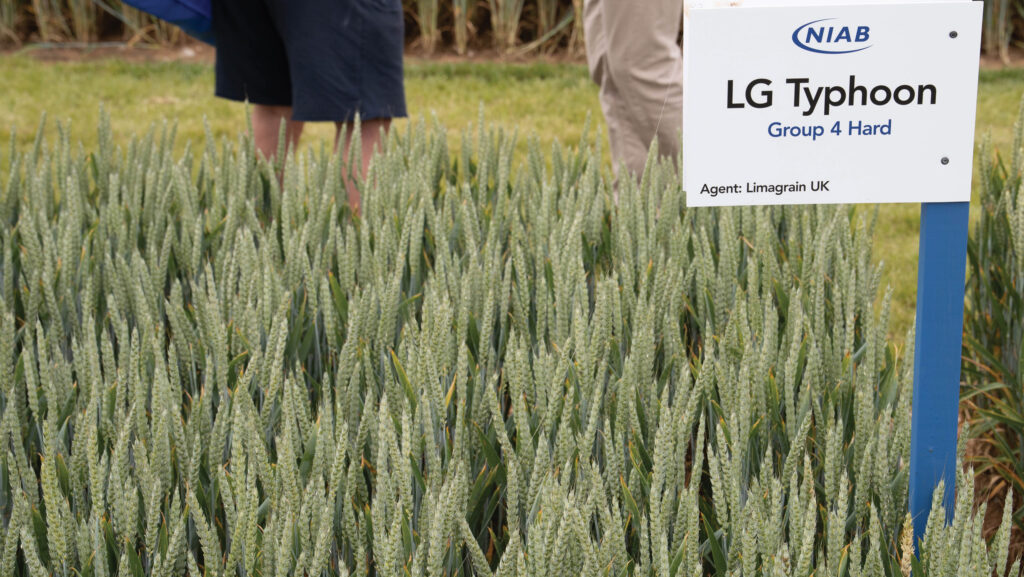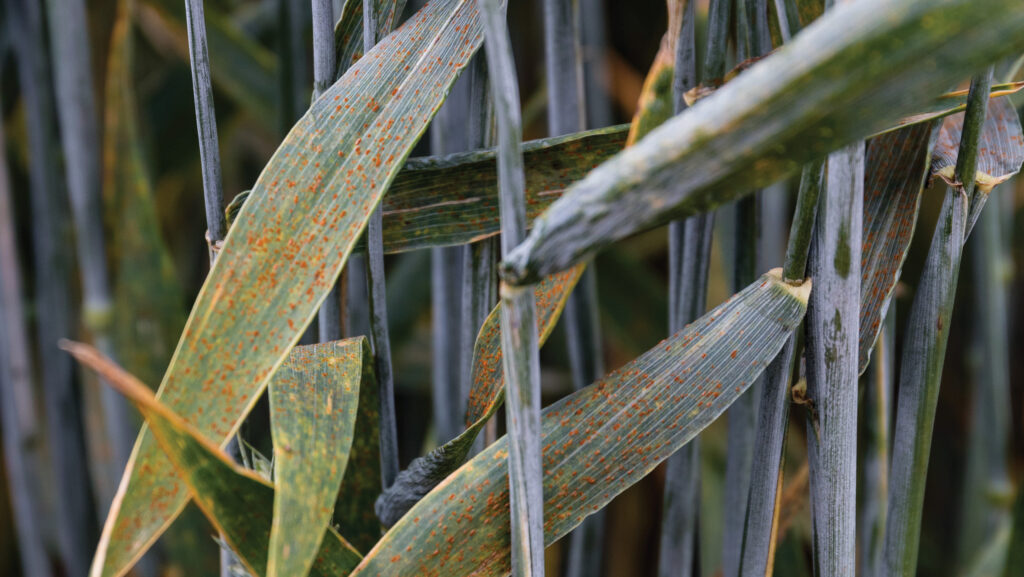Wheat variety winners and losers in challenging 2023-24 season
 © Tim Scrivener
© Tim Scrivener Wheat variety performance in 2024 was affected by the double whammy of terrible growing conditions and high disease pressure, making it a more complicated story than usual.
There’s no doubt that many wheat crops were already on the back foot by the time the disease threat became obvious earlier this year, says Clare Leaman, cereals specialist at Niab.
It was well-documented that both brown rust and septoria caused difficulties, she says.
And it is easy to forget that crops had come through some very wet periods and poor ground conditions by the time they noticed disease symptoms.
See also: Harvest 2024: The 5 top-yielding winter wheat varieties map
“There was a lot going on,” she recalls. “Some varieties didn’t like the conditions, but coped with the disease, others were the opposite.
“Subsequently, harvest results varied and there were some disappointments.”
To cap it all, the season was compounded by spraying difficulties, with growers unable to travel at key times and fungicides being put under pressure by less-than-optimum spray timings.
Trials results v farm performance
That all helps to explain why there were considerable differences between Recommended List trial results and on-farm performance when it comes to individual varieties, notes Clare.
“When looking at the figures, don’t forget that trial plots are located on the best parts of fields, and plots are removed from the data if they are waterlogged or similar, so that mitigates some of the cropping year effects.”
For this reason, it’s not as simple as saying that varieties with better disease resistance outperformed their more susceptible counterparts in 2024.
However, it was a common factor and should remain a key variety selection criterion.
Winners
- Feed wheat: Champion, Graham and Typhoon
- Group 2: Palladium and Mayflower
- Group 1: Zyatt
- Group 3: Bamford
Feed wheat

© Tim Scrivener
The hard Group 4 variety Champion had a good year, both in trials and on-farm, coming out as the highest yielding variety in AHDB work.
“Champion shrugs off septoria easily and it coped with the conditions well,” reports Clare.
“It is susceptible to brown rust, which revealed itself in untreated plots, but it came through fine. That shows us there was more going on.”
Another popular hard feed wheat, Dawsum, didn’t fare as well. While it was only 1% down on yield in RL trials, it didn’t produce the goods on farm in the same way as Champion.
“Dawsum coped with disease, but it didn’t like the conditions. That was the same for Costello, which has always been a very consistent performer.”
Feed wheats that did better than expected in 2024 include Graham and Typhoon – the latter being a variety that is suitable for early drilling and has the disease resistance to match.
Whether Typhoon is a more resilient type remains to be seen – it’s not possible to find a “tough” rating on the Recommended List.

© Tim Scrivener
Group 2 results
The other widely grown winter wheat variety, Group 2 Extase, also gave better trial results than farm performance in 2024.
Clare’s view is that it may be more susceptible to stress than some other varieties, as it has also been inconsistent in previous years.
“There is more disease in it now in terms of both yellow rust and septoria, which is not surprising, and has been well documented in its ratings.
That should be a consideration where it’s going in the ground again.”
Otherwise, the Group 2 sector did well in a very testing year – with Palladium and Mayflower giving good results on farm.
Both varieties have good disease resistance ratings and were able to cope with the wet.
Group 1 wheats
The Group 1 sector saw susceptible Crusoe really struggle with brown rust, but Zyatt performed better than previous years, when yellow rust was a bigger issue.
“Yellow rust had less of an impact this year, while brown rust took more of a toll than we are used to,” continues Clare.
She describes brown rust as a survivor and stresses that the infected leaf needs to die of cold in the winter for it to be eliminated, rather than remain in the crop.
“What we don’t know is whether mild winters are going to become more frequent and whether we need to change the emphasis on brown rust in the testing system, given that the current batch of recommended varieties don’t score very well for brown rust resistance.”
While the Group 1 sector has been boosted by the addition of Cheer, its lack of yield advantage is proving to be a sticking point with growers and seed is still available.
“We haven’t seen enough of it yet to know how it compares to others in this group on farm.”
Newcomers
Otherwise, there are high hopes for two newly recommended varieties, Group 3 Bamford and Group 4 Beowulf, but there is also still much to learn about these two, believes Clare.
“Based on 2024 trials, Beowulf slightly underperformed and Bamford did well. That could be the other way round next year.”
Lower protein levels
A common disappointment with Group 1 and Group 2 wheats was low proteins, which has affected the premiums achieved.
“We thought it would be specific weight that was down after the lack of sunshine, but it’s the protein levels that have been affected,” reports Jock Willmott of Ceres Rural.
“Where you’ve lost a bit of premium and had to pay to take out ergot, you will be down by £20-45/t.”
It was a particular problem with Group 2s, he reports, giving growers a dilemma about what to grow this coming year. “They yielded a bit better than we expected, but the additional foliar application of nitrogen didn’t get the proteins up enough.”
What about ergot?
Another legacy of harvest 2024 was high levels of ergot in grain, but there isn’t enough data to be able to link that to varieties.
“There are always anecdotal stories and there may be a slight variety element to consider, but the weather and growing environment are much stronger factors,” advises Clare.
Brown rust

© Blackthorn Arable
The high levels of brown rust seen very early in 2024 were unusual, says Catherine Harries, senior crop protection scientist at AHDB.
But these are unlikely to translate into major changes in resistance ratings.
There was some evidence of a bit more and a bit less disease in some varieties compared to the previous year.
Therefore minor adjustments to brown rust ratings will appear on the next Recommended List, she confirms.
“But there’s no evidence that it’s got more aggressive or that there’s been a big change in virulence.”
The brown rust watch list will be updated early next year, she adds, so any unusual levels of diseases can be flagged and investigated.
“This is a valuable early warning of any change in the race structure of brown rust, which helps with in-season management strategies.”

